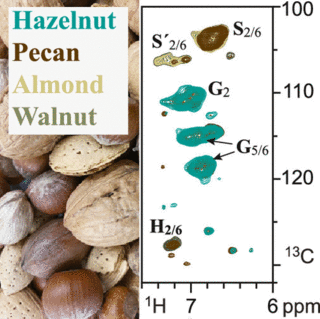Eudicot Nutshells: Cell-Wall Composition and Biofuel Feedstock Potential
L. Landucci et al. “Eudicot Nutshells: Cell-Wall Composition and Biofuel Feedstock Potential” ACS Sustainable Chemistry and Engineering 34, 12 (2020) [DOI: 10.1021/acs.energyfuels.0c03131]
Nutshells are the recalcitrant and membranous layers that encompass and provide protection to the seed of a fruit. Rich in lignin, these are often waste products of the food industry and are a potential energy-dense feedstock for biorefineries to convert to biofuels. Assessing their potential requires an understanding of the relative amounts of cellulose, hemicelluloses, and lignin, the composition and structure of the lignin, and a saccharifiability assessment, all provided here. In the context of understanding the general character of phylogenetically diverse eudicot species, we provide a chemical analysis of the lignin in the shells of commonly eaten nuts and detail the chemical composition of their lignins. Particularly striking observations include the >40% levels of Klason lignins in the nutshells from macadamia, pecan, and Brazil nut and lignin compositions ranging from <1% syringyl (S) in macadamia to 77% S in pistachio and essentially 0% p-hydroxyphenyl (H) in mango to as high as 7.5% H in walnut. Novel units in the lignin polymer (such as the hydroxystilbenes recently discovered in macaúba and coconut shell lignins) were not evident in any of the samples, but the series provided such a range of compositions that it aided more detailed assignment.
Annotated NRM data set can be found in the Supplementary Information.
